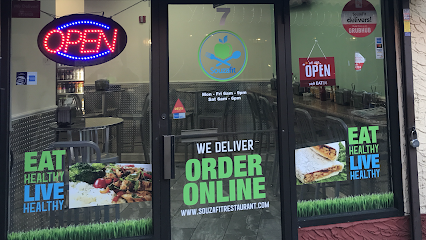In the quest for healthier eating, it’s easy to fall victim to misleading labels and marketing ploys. Many snacks that claim to be "healthy" are actually packed with hidden sugars, unhealthy fats, and artificial additives. Let’s uncover the truth about fake "healthy" snacks and how you can make better choices for your well-being.
Understanding the Deception Behind Fake "Healthy" Snacks
Food companies are experts at crafting packaging and labels that make products appear healthy. Terms like "natural," "low-fat," and "gluten-free" can be appealing but are often misleading. While these buzzwords sound nutritious, they don’t necessarily mean the product is good for you.
Take "low-fat" snacks, for example. While they may contain less fat, they’re often loaded with sugar to make up for the loss of flavor. Similarly, "natural" doesn’t guarantee the absence of processed ingredients or added sugars. Understanding these tricks can help you avoid snacks that only pretend to be healthy.
Common Fake "Healthy" Snacks to Watch Out For
- Granola Bars While marketed as a convenient health snack, many granola bars are little more than glorified candy bars. Packed with sugar, preservatives, and minimal fiber, they offer a quick energy spike but little sustained nutrition.
- Veggie Chips Despite their name, veggie chips are often just regular potato chips with added vegetable powder. They’re fried, high in sodium, and lack the nutrients of whole vegetables.
- Flavored Yogurt Yogurt is often praised for its probiotics and protein, but flavored varieties can contain as much sugar as a dessert. Opt for plain, unsweetened yogurt instead.
- Trail Mix While nuts and seeds are healthy, trail mix often includes candy-coated chocolates, dried fruits with added sugar, and unhealthy oils.
- Smoothies Store-bought or premade smoothies are frequently packed with added sugars and syrups. Even natural fruit juices can contribute to a sugar overload.
How to Spot Truly Healthy Snacks
To ensure your snacks are genuinely healthy, follow these guidelines:
- Read the Ingredients: Look for short ingredient lists with items you recognize. Avoid products with artificial sweeteners, high-fructose corn syrup, or hydrogenated oils.
- Check the Sugar Content: Aim for snacks with less than 5 grams of sugar per serving, unless it’s naturally occurring from whole fruits.
- Prioritize Whole Foods: Opt for snacks like fresh fruits, vegetables, nuts, and seeds over processed options.
- Watch the Serving Size: Many "healthy" snacks appear low in calories but have small serving sizes, leading you to consume more than intended.
Healthy Snack Alternatives
Instead of falling for fake "healthy" snacks, try these genuinely nutritious options:
- Homemade Trail Mix: Combine raw nuts, seeds, and a small amount of unsweetened dried fruit.
- Fresh Veggies with Hummus: Pair crunchy veggies like carrots and cucumbers with a protein-packed hummus dip.
- Plain Greek Yogurt with Berries: Add fresh or frozen berries to plain Greek yogurt for a naturally sweet treat.
- Air-Popped Popcorn: A whole grain snack that’s low in calories and easy to customize with healthy seasonings.
- Homemade Smoothies: Blend whole fruits, leafy greens, and a protein source like Greek yogurt or almond butter.
Take Action Today
The next time you’re tempted by a snack claiming to be healthy, take a moment to read the label and consider the ingredients. Your body deserves better than fake health promises—it deserves real nourishment.







